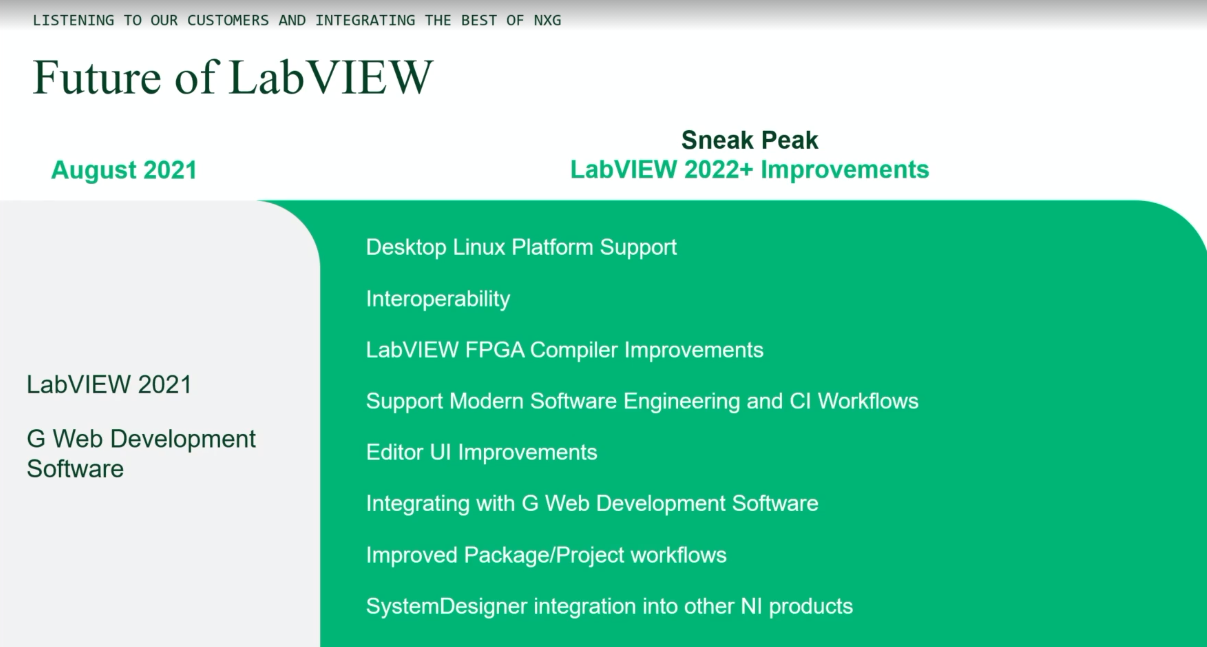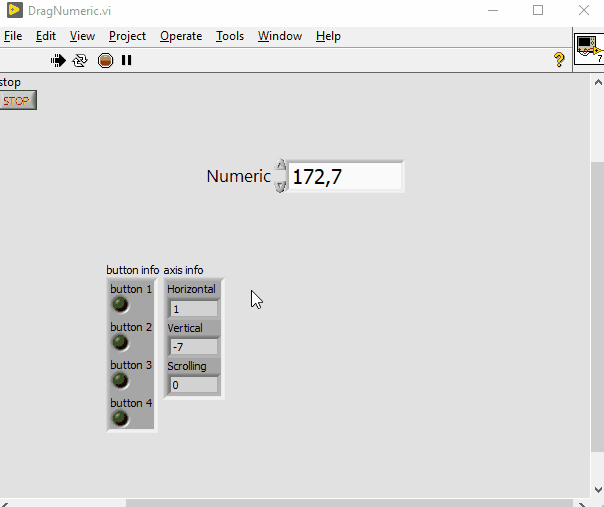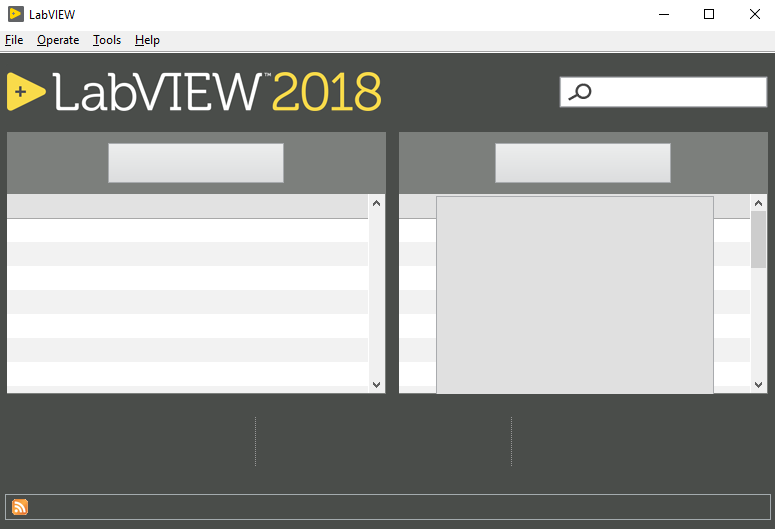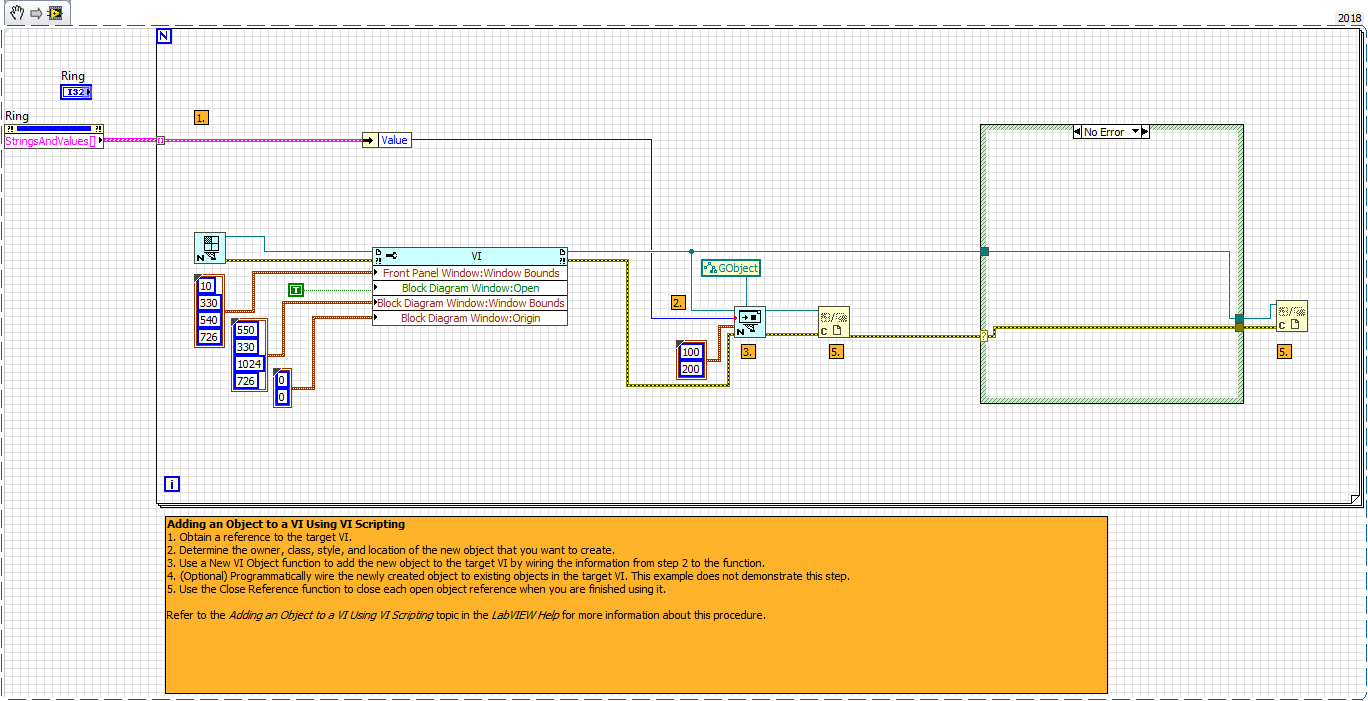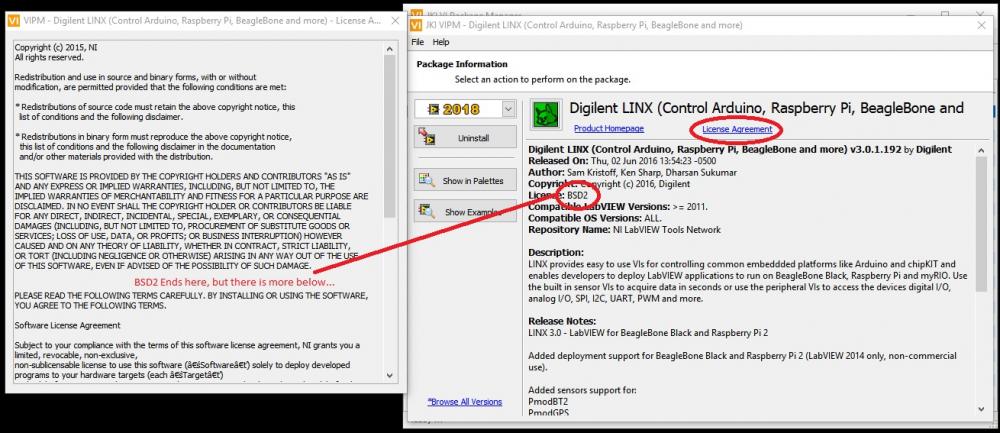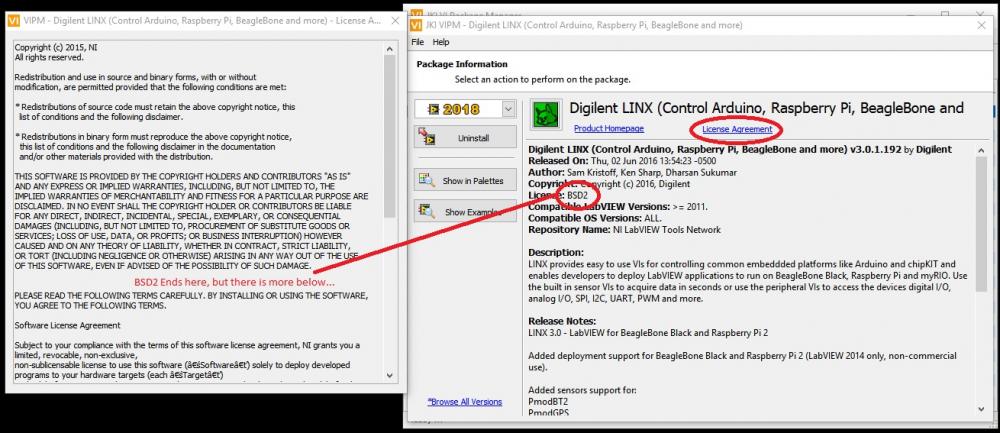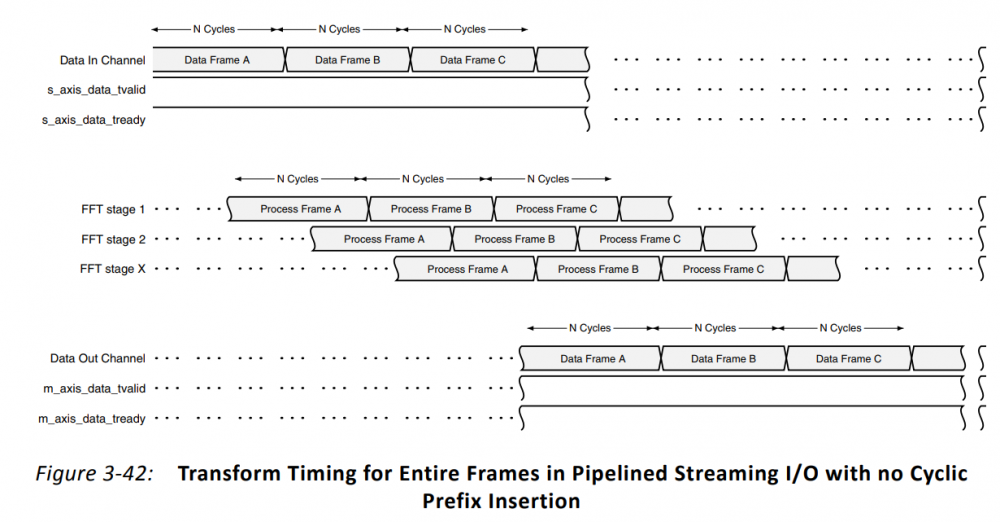-
Posts
85 -
Joined
-
Last visited
-
Days Won
15
Content Type
Profiles
Forums
Downloads
Gallery
Everything posted by PiDi
-
It should work. It doesn't matter if you're passing class or cluster or whatever else. Some generic questions, as troubleshooting this deeper would require actual code: 1. Is your FGV VI non-reentrant? 2. Are you using this FGV in different timed loops with different priorities? Are you sure all of those loops are running (i.e. one high-priority, high-rate loop might starve the others). 3. Can you use Global Variable instead od FGV? (yes, it's a genuine question ) I'm not sure why adding a ton of complexity to the problem would solve it
-
Let's try to break it down a bit: Why is it too complex? What exactly is complex? What's wrong with that? What problems are you actually trying to solve by trying to move into OOP? Why do you think the "simple producer/consumer" is a mistake? I'd say QMH and Actor Framework are kind of fancy producer/consumer frameworks, you may get some value, but you also get the learning curve. Have you ever used them, or even looked at some example applications? Again - what is wrong with your current way of handling the data? As a side note - going with OOP do not require you to use Actor or QMH, and using any of those frameworks does not automatically make your code object-oriented. Generally speaking, if you're thinking about designing your application in object-oriented way, you'd need to actually start with the design part - do some modeling of your application, thinking about possible objects and their interactions with other objects, etc. But I'd start with thinking about questions above - what problems are you trying to solve?
- 5 replies
-
- dqmh
- actor framwork
-
(and 1 more)
Tagged with:
-
Just watched it, it's underwhelming. The first feature was "improved Matlab integration" followed by Python... You don't really expect much if they start with better 3rd party software integrations. And then there was the Future of LabVIEW slide: That's just a bunch of generic slogans and integrations of niche products... Don't see any clear idea of the direction here.
-

The ability to adjust a numeric value by dragging the mouse
PiDi replied to Neil Pate's topic in LabVIEW Feature Suggestions
@thols, it's doable, I may do it for further fun @ShaunR, nah, just event structure and Input Device Control pallete. Attached the LV8.5 version if you want to take a look. Implementing it in XControl would be cumbersome as it needs to pool the mouse continously. (Plus I removed XControls entirely from my "technology toolbox" a long time ago, together with tons of problems they cause). DragNumeric.vi -

The ability to adjust a numeric value by dragging the mouse
PiDi replied to Neil Pate's topic in LabVIEW Feature Suggestions
Interesting idea, I've made a quick implementation of it just for fun. This might actually be usefull on touch screen GUIs, I need to explore that. DragNumeric.vi -

Anyone have a G version of "Search Results" dialog that I can use?
PiDi replied to Aristos Queue's topic in VI Scripting
Do you want to just open the proper FP/BD and highlight the item? This part is pretty straightforward. -
Same story here. We've just started to standarize on Beckhoff. EtherCAT is nice medium for realizing distributed systems. We use EP boxes for distributed IO (just as your case - a great way to reduce wiring; add IO-Link sensors and actuators to the mix and you save A LOT of work with the system assembly and testing and gaining unlimited flexibility). EL terminals for the control cabinet - you can basically build any system capabilities you like, and add anything any time in case you'd forgot. Also, you get safety-rated terminals and boxes (and you can build distributed system with that, no need to bother with all those cables from curtains and interlocks from the other side of the machine). And motion control with EtherCAT based servodrives. And everything integrated within single TwinCAT environment (and they even know and care what source code control is). And you can have everything deployed on Windows based industrial PC with real-time TwinCAT capabilities and have some other applications running side-to-side. Well, if you haven't noticed yet, I'm in love with this whole system That being said, I still consider LabVIEW ("old-gen" one, mind you) to be superior environment. It's sad that NI never had and still doesn't have too much to offer in terms of machine control and industrial automation.
-

NXG, I am trying to love you but you are making it so difficult
PiDi replied to Neil Pate's topic in LabVIEW General
After starting NXG 5.0.0 and traditional hang of the whole OS for 3 minutes, LabVIEW forgot how to write text on the screen Ok, not only LabVIEW, other apps too... They used to have a name software that caused weird system behaviour: a virus... -
I don't think this window is available as VI. It is probably one of those built-in windows. Even if it isn't, you'll probably be better off doing your own tool. The recreation of the current override VI generation shouldn't be very complicated, and you could use anything available in MemberVICreation.lvlib to save some work. Project Provider for it is really just a quality-of-life addition, your tool will work as well (or even better :D) with a simple class selector drop-down list.
-
-
Those RT utility VIs get broken whenever you try to open code in My Computer project context instead of RT. On which target do you develop your framework? Do you have any shared code between PC and RT? If yes - try to get rid of it.
-
I've seen this behaviour many times. We use OOP and lvlibs heavily in our projects and unfortunately often run into those builder quirks. The fun fact is that sometimes the same project built on different machines produces different outcomes (on one it always breaks, while on other it always succeed, while on third it's 50-50 chance). I never really bothered to investigate and report this to NI as those problems are very non-reproducible. Going to your specific question aboutt VIs which end up outside exe (in no particular order) : 1. Check the dependencies between libraries. The builder hates circular dependencies between them (i.e. something in lib A depends on something in lib B and vice versa). Avoid them - usually the solution is to move the offending VIs between those libraries. You'll also end up with better code design, so double the profit. 2. Enable builder log generation (I think it's in Advanced settings) and see if you can make any sense of what it puts out regarding those "outside" VIs. 3. Try building on different machine. 4. Set "Enable debugging" for the build (also in Advanced settings I think). 5. Try to recreate the problematic VIs under new names - create the blank VI, copy the contents (block diagram) of the current VI, replace the calls. Do not simply rename the current VI and do not Save as..., both of those might retain some hidden problems inside the VI. Also,try to change reentrancy settings and try to make them inline. 6. Try to recreate callers of those problematic VIs in the same manner as above. 7. Separate compiled code from the VIs. 8. On the contrary, do not separate the compiled code. Try to do both and see if there is any difference. 9. Last resort - put the contents of the VI inside the caller.
-

Multiple EXE instances crashing at the same time?
PiDi replied to drjdpowell's topic in LabVIEW General
It is actually possible to force DLL to use shared memory space, so it still may be the problem. I had a simillar problem once: when I would run the DLL in development OR in exe, it was ok. But when the exe was running and I was simultaneously runt the dev VI, it would crash. I never bother to look for the actual solution, as I only needed only one exe in production. But I've heard that renaming the DLL for each instance of application might be solution, as it allocates the memory space, shared included, according to the name. I'm not really sure if it's true, but if you're desperate, it is worth a try. -
Hello LAVA-ers! If you haven't heard already, the CLA Summit 2020 will take place in Budapest on March 24th to March 26th. You can read more and register here: https://events.ni.com/profile/web/index.cfm?PKwebID=0x94716776a&varPage=home . This year we have an Open Source Session dedicated to the people who want to show their projects and encourage the collaboration. The rules are simple: Contact either me (through private message or email: piotr.demski@sparkflow.pl), Thomas McQuillan (who's also wrote about it on linkedin: https://www.linkedin.com/feed/update/urn:li:activity:6628225386339803137/ ) or Anastasiia Vasylieva (anastasiia.vasylieva@ni.com) You'll prepare three minutes presentation to showcase your project (we'll provide you with two-slides presentation template to fill most important info) (optional) We also have a poster session, so you can prepare an A1 sized poster to display at the Summit (please also contact us if you're interested) I know that not everyone here is CLA and is able to come to the Summit, but I encourage you to submit your project anyway. We'll compile all the presentations into one document and we'll distribute it in the LabVIEW community. So it's also a good way to promote your project!
-
- 1
-

-
Hi Porter, where is this Pallete API? I've never used it, so I'm a bit in the dark Would you like to help creating this plugin to G Code Manager?
-

Sharing serial device from Raspberry Pi to VISA?
PiDi replied to Sparkette's topic in LabVIEW Community Edition
This (controlling the VISA resource from different computer) is generally possible using VISA Server (https://knowledge.ni.com/KnowledgeArticleDetails?id=kA00Z0000019LfHSAU&l=pl-PL). But I have no idea if VISA Server is even available on Linux. So chances that it is available or will run on Raspbian are closer to zero... -
I got it from the license agreement, here: I've found the topic on that matter: https://www.labviewmakerhub.com/forums/viewtopic.php?f=12&t=1463&p=7385&hilit=license+agreement#p7385 , and it seems that intention was to exclude only BBBlack and Raspberry from commercial use... But I don't think it is in any way clearly stated in the license agreement (I'm not a lawyer too, so maybe I'm just missing something).
- 15 replies
-
- daq
- alternatives
-
(and 1 more)
Tagged with:
-
LINX is not for commercial uses, at least that's what they say in the license agreement: And actually the customer who don't believe this is robust solution would be absolutely right
- 15 replies
-
- daq
- alternatives
-
(and 1 more)
Tagged with:
-
You can also get other PLCs at this price range. Though I never actually used them, Rockwell Micro820 and 830 series looks interesting (industrial grade, some build-in DIO and AIO, ability to extend by pluggable modules, Ethernet/IP communication). And AFAIK they come with free software (Connected Components Workbench). There are of course others - Siemens Logo!, Mitsubishi also have some cheaper models...
- 15 replies
-
- 1
-

-
- daq
- alternatives
-
(and 1 more)
Tagged with:
-
You might want to google "Remote I/O" (not "Distributed I/O", those are two slightly different things). Every industrial automation company have some (Advantech, Phoenix, Eaton, Moxa... Just from top of my head). If this is slow, simple monitoring of some DIO states, you might be able to find Modbus solution which would not generate additional hardware costs (just connect Ethernet or serial cable, grab free toolkit and you're good to go). But if you need something more complex, then you might quickly get to the point where adding NI based solution to your already NI based project is not really more expensive.
- 15 replies
-
- daq
- alternatives
-
(and 1 more)
Tagged with:
-
Ahhh, so if you don't actually need to process data in 4 uSec, but can have a little more latency, that changes a lot! Using Pipelined Architecture in Xilinx FFT Core you can stream the data continuosly and it will generate result continously - with initlai latency: (from Fast Fourier Transform v9.0 LogiCORE IP Product Guide). In other words: if you'll start streaming the data continuosly, you'll get the first output value after X usec, and then next value every clock cycle. Though you'll need to properly implement AXI4-Stream protocol around the IP Core (basically this: http://zone.ni.com/reference/en-XX/help/371599K-01/lvfpgaconcepts/xilinxip_using/ , but there are some caveats when interfacing with Xilinx IP Cores) and some buffering. I also agree with smithd that with enough "latency budget" the GPU way might be more cost-efficient.
-
If we would go with the Xilinx FFT IP Core path: the FPGA itself is not limiting factor in the clock frequency, the IP Core is. Take a look at Xilinx docs: https://www.xilinx.com/support/documentation/ip_documentation/ru/xfft.html . Assuming Kintex-7 target and pipelined architecture you probably won't make it to 400 MHz. From my own experience - when trying to compile the FFT core at 300 MHz I got about 50% success rate (that is - 50% of the compilations failed due to the timing constraints) - but this is FPGA compilation, so when you're at the performance boundary, it is really random. We can also take a look at older versions of FFT IP - Xilinx even included latency information there: https://www.xilinx.com/support/documentation/ip_documentation/xfft_ds260.pdf . Take a look at page 41 for example - they didn't go under 4 uSec. Ok, thats Xilinx, but you say: "According to NI, the FFT runs in 4 μs (2048 pixels, 12bit) with the PXIe 7965 (Virtex-5 SX95T)." - I can't find it, could you provide reference? GPU itself should be able to do the FFT calculation in that time with no problem, the limiting factor is data transfer to and from GPU. I wrote all of the above to provide a bit of perspective, but I'm not saying that this is impossible to do. I rather say that the only way to know for sure is to actually prototype it, try different configurations and implementations and see if it works. So, wrapping this up, I would review the requirements (ok, if you say that it is absolutely 4 uSec without any doubts, then let's stick with it - and I really think this awesome to push the performance to the limits ). Then try to get a hold of some FPGA target (borrow it somewhere? from NI directly?) and try to implement this FFT. And the same for the GPU (for the initial tests you could probably go with any non-ancient GPU you can find in PC or laptop).
-
With Xilinx FFT IP Core the latency is usually about two times the FFT length and the max archievable clock frequency is about 300 MHz. With 1024 points FFT that gives you about ~7 uSec latency. And we're talking about 1D FFT only, so we'd also need to account for image acquisition, data preparation for FFT and post-FFT processing and decision making. And by the way, 4 uSec is 250000 frames per second. There are two possibilities: either your requirements need a bit of grooming... Or you're working on some amazing project which I would love to take part in
-
If you want to simply change class banner color, check this:
-
I've been playing a bit with AutoIT (https://www.autoitscript.com/site/autoit/). But I've faced the same problem - there is no way, other than screen coordinates, to refer to any GUI items in LabVIEW. What exactly are those "Object IDs" and where do they come from, and why they are not present in LabVIEW - those questions are beyond my knowledge. But if someone was succesfull with GUI testing in LV, I'd be interested to hear that too


